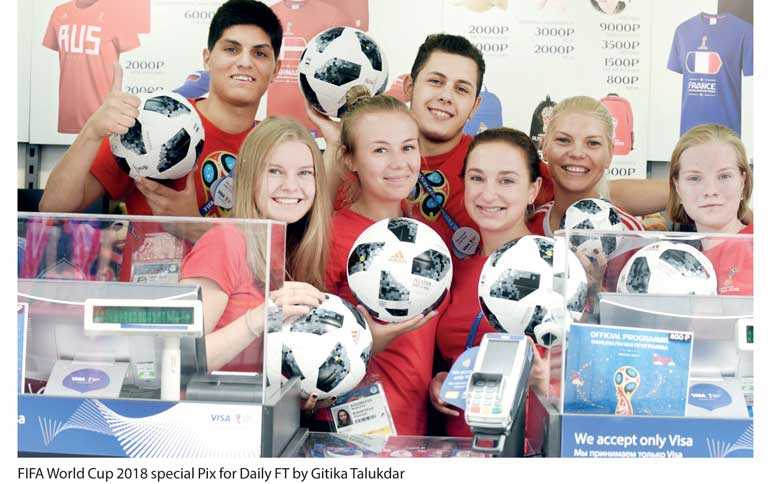Thursday Jan 08, 2026
Thursday Jan 08, 2026
Wednesday, 4 July 2018 00:00 - - {{hitsCtrl.values.hits}}


Visa, the Official Payment Services Partner of FIFA has released an analysis of foreign travellers’ spending during opening days of 2018 FIFA World Cup.
The results found that in the 11 Russian host cities of the tournament, approximately one in every five (17%) purchases with Visa used contactless payment technology, including smartphones, bracelets and rings. In the stadiums themselves, the share of contactless payments was 54%, inclusive of purchases made by fans from Russia and abroad.
On average, across the 11 host cities, Visa cardholders spent 3,575 rubles (approximately $56.65) per transaction, with fans from the United States spending the most – followed by China and Mexico in second and third, respectively.
“Many of the international visitors attending this summer’s tournament have never been to Russia before and we’re excited to be providing them with the ultimate tournament experience, powered by the speed and ease of Visa’s digital payments, which are increasingly happening on contactless cards, devices and wearables,” said Ekaterina Petelina, country manager, Visa Russia. “In the stadiums particularly, fans are using contactless payment technology to speed through the lines and quickly get back to the action on the pitch.”
Spending by host city
The five host cities that saw the highest amount of tourist spending – both in and out of stadium – were as follows:
The largest average individual purchases were seen in the following categories:
Overall, a majority of purchases in host cities fell into the lodging, fashion and restaurant categories.
In-Stadium Spending
Luzhniki Stadium led all venues for total number of payment transactions, where fans spent 139 million rubles ($2.2 million) – of which71 million rubles ($1.12 million) came from non-Russian citizens and 68 million rubles ($1.1 million) from Russian citizens.
The opening match between Russia and Saudi Arabia on June 14 – where fans from 123 countries filled the stadium – saw the highest volume of payment transactions. The June 17 match between Germany and Mexico saw the second highest volume of transactions. The average in-stadium transaction amount for all matches during the first five days of tournament play was 1,682 rubles ($26.66).
Additionally, Russian fans made twice the amount of transactions for food and drinks compared to non-Russian fans, however, the average per-transaction amount for non-Russian attendees was 1.5 times higher than Russian purchases in those categories.
Cashless from kick-off to the final match
For the 2018 FIFA World Cup Russia, Visa is the exclusive payment service in all stadiums where payment cards are accepted. In-stadium, fans can pay with contactless Visa credit and debit cards and mobile payment services at the more than 3,500 point-of-sale terminals and 1,000 mobile concessionaires that have been equipped with the latest in payment innovation.
Visa Inc. is the world’s leader in digital payments. Our mission is to connect the world through the most innovative, reliable and secure payment network – enabling individuals, businesses and economies to thrive.
Our advanced global processing network, VisaNet, provides secure and reliable payments around the world, and is capable of handling more than 65,000 transaction messages a second. The company’s relentless focus on innovation is a catalyst for the rapid growth of connected commerce on any device, and a driving force behind the dream of a cashless future for everyone, everywhere. As the world moves from analog to digital, Visa is applying our brand, products, people, network and scale to reshape the future of commerce.